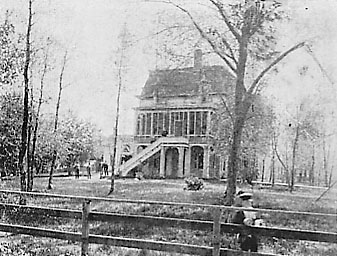Keeley Institute

The Keeley Institute was a private facility established in Fargo on October 1, 1894. It was located southeast of Island Park near the red River between 6th and 7th Avenues South, east of Fourth Street.
J.V. Branham was the Manager and G.W. Boals was the Medical Director.
The Keeley Institutes were franchise facilities for the treatment of addiction to alcohol, nicotine and narcotic drugs. Dr. Leslie E. Keeley opened the doors of the first Keeley Institute, the first medical institution to treat alcoholism as a disease, in Dwight , Illinois in 1879. Keeley's Cure relied heavily on injections of “bichloride” or “double chloride of gold” (hence the term “Gold Cure”). The Keeley Cure was so well-known in its day, that several popular songs, such as an Irish comic song, entitled "The Keeley Cure," parodied it unmercifully. By the 1890s every state and nearly every country had a Keeley institute of its own.
"The Cure" was so popular that the Minnesota state legislature enacted an inebriate law which provided that "any drunkard who has not the means to defray the expense of the bichloride of gold cure may borrow the necessary sum, not exceeding $100, from the county in which he resides, giving his note therefore payable at any time within five years, without interest." The Minnesota Supreme Court declared the law unconstitutional on May 16, 1896.
Keeley organized former patients (calling them “graduates”) into “missionaries on behalf of the cure.” It was wildly successful. By the late 1800s, Dr. Keeley had founded over 200 treatment centers, where patients were given the secret "cure" in the form of injections. Surprisingly, these centers had a 50 percent success rate. People who recovered from their problems stayed well because in addition to the seemingly useless injections (gold, alcohol, and strychnine were ingredients), Dr. Keeley encouraged group therapy and the exchange of information, as well as getting community involvement. These groups were a precursor to the groups of today, such as Alcoholics Anonymous (AA) and the Hazelden Foundation. From them we learned that groups are important for recovery, and that there is strength in numbers.
When Dr. Keeley died, his partners, John Oughton and Major Curtis Judd carried on the work they had helped to begin. However, only eleven Keeley institutes survived into the 1920s. The original facility at Dwight has dropped “all pretensions of offering any specific remedy for inebriety” and still operates today.
